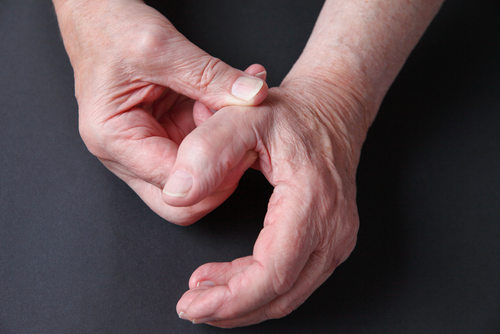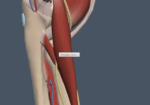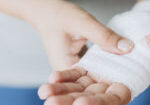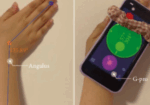Changes in ROM of the MCP after Trapeziometacarpal Arthrodesis
Filed under Reviews
Rapid Review: Changes in ROM of the MCP after Trapeziometacarpal Arthrodesis

Hayashi, M., Kato, H., Komatsu, M., Yamazaki, H., Uchiyama, S., & Takahashi, J. (2021). Changes in the Functional Range of Motion of the Thumb Metacarpophalangeal Joint After Trapeziometacarpal Arthrodesis for Patients With Advanced Trapeziometacarpal Osteoarthritis. The Journal of hand surgery, S0363-5023(21)00613-4. Advance online publication. https://doi.org/10.1016/j.jhsa.2021.09.018.
The Skinny:
Several published studies have advocated for simultaneous procedures for thumb cmc arthritis. The procedures include the Trapeziometacarpal (TMC) arthrodesis and correction of the hyperextension deformity of the MCP joint. This study looked to determine if a procedure to the MCP joint was necessary to correct the hyperextension of the joint by determining changes in the range of motion of the thumb MCP Arthrodesis before and after TMC arthrodesis. The authors also looked to determine functional ROMs of MCP joints (MCP ROM) before and after TMC arthrodesis.
In the Weeds
A total of 15 thumbs in 12 patients were TMC osteoarthritis underwent a TMC arthrodesis between 2010 and 2015. Ten thumbs were examined using preoperative radiographic measurements including the extension of the MCP joint while the thumb was resting. All thumbs were symptomatic stage III Eaton classification for TMC osteoarthritis and were treated with TMC arthrodesis. Measurements were repeated post-operatively. The patient’s average age was 66 years of age, and there were 3 males and 6 females enrolled in the study. Post-operative measurements were taken at a minimum of 10 months and a maximum of 28 months after surgery.
Range of motion was evaluated during the following ADL tasks: holding a glass, opening a bottle lid, opening and closing a plastic cap, twisting a towel, grasping a steering wheel, buttoning a shirt, pulling a note out of a wallet, clipping fingernails, typing a keyboard and washing a face.
Bringing it Home
The MCP’s average functional range of motion in the flexion plane increased from 26 to 38 degrees, and the average extension of the MCP joint decreased from 16 to 5 degrees hyperextension. There were no significant changes in the total arc of motion. ADL tasks before and after the arthrodesis required half of the active range of motion of the MCP joint. The study results suggest a simultaneous procedure to correct the hyperextension deformity of the MCP joint might be unnecessary when performing TMC arthrodesis.
Rating: 4/5
The study had a few limitations. The number of patients in the study was small, making it difficult to draw conclusions from the study. There was no control group in the study for comparison. The study could potentially replicated on a larger scale to draw more affirmative conclusions.
More To Read
Common Median Nerve Injuries
Common Median Nerve Injuries By: Madison Mott Did you know!? Aside from the most common upper extremity nerve compression, carpal tunnel syndrome (CTS), there are several additional median nerve injuries. Pronator SyndromeCompression of the median nerve between the two heads of pronator teres. Result of recurrent, forceful gripping, forearm rotation, or elbow flexion. Signs include…
Read MoreGot Wounds? How to manage them as a Hand Therapist.
Wound care is messy. It can be intimidating and scary with so many variations of wounds (for example, white skin around wounds) and so many products out there, it is hard to know what to use, when to use it, and how to use it. If you go to a wound care conference, you’ll spend most of…
Read MoreThe Identification of Mobile Applications for Distal Radius Fractures Rehab.
By Taylor Landholm Chen, Y., Yu, Y., Lin, X., Han, Z., Feng, Z., Hua, X., Chen, D., Xu, X., Zhang, Y., & Wang, G. (2020). Intelligent Rehabilitation Assistance Tools for Distal Radius Fracture: A Systematic Review Based on Literatures and Mobile Application Stores. Computational and Mathematical Methods in Medicine, 2020, 7613569. https://doi-org.methodistlibrary.idm.oclc.org/10.1155/2020/7613569 The Skinny The…
Read More5 return-to-cooking activities (that don’t require a kitchen)
Hand therapy can and should be very occupation-based. Every week, we hear comments from patients that back that statement up: “I need to get back to work” “I just want to golf again” “I can’t even open a water bottle” “My spouse has to do all of the cooking” Although standard exercises are helpful, it’s…
Read MoreSign-up to Get Updates Straight to Your Inbox!
Sign up with us and we will send you regular blog posts on everything hand therapy, notices every time we upload new videos and tutorials, along with handout, protocols, and other useful information.






